|
Public Waldorf is building a momentum towards education renewal and it starts with a spark of light that is in each of us. In 2015, an agreement between AWSNA (the Association for Waldorf Schools of North America) and the Alliance for Public Waldorf Education was made that forged the way to "strengthen Waldorf Education and ensure its availability and accessibility to the next generation." The service mark of "Public Waldorf" was granted to the Alliance. It is like a heraldic flag waving proudly and freely. With over 45 charter schools in membership thus far, the banner is a call to action. The momentum of this movement was evident in the massive attendance at the Alliance Conference, co-hosted by Rudolf Steiner College. It was wall-to-wall people in Stegmann Hall as key-note speaker Jack Petrash, Waldorf educator and founder of the Nova Institute, relayed moving stories that brought education to light. His messages were a crystal clear distillation of what everyone in the room suspected in their hearts: we need to enliven our children's education. The attendees were treated to in-depth, soul-searching, skill-building workshops and discussions that pointed in this direction. Alliance Conference facilitators included Bente Goldstein, Alice Stamm, Eva Cranstoun, Edmund Knighton, Jamie York, and Liz Beaven, along with Alliance leaders Victoria Temple and Marianne Kennedy. The Public Waldorf banner beckoned people from both Waldorf and public kingdoms! "Light in our thinking" meant art, symphonic thinking, and connectedness, according to Jack Petrash. Art encompasses the wonder and beauty of the fine arts, handwork, drama, and story-telling, which gives meaningfulness to learning. Symphonic thinking describes the inter-disciplinary and interwoven approach to learning. Connectedness means we together account for all educational systems, cultural, historical and social impulses to strive for wholeness of learning. Syrendell was happy to partake in the synergy of the Conference. Participants learned needle-felting and wet-on-wet watercolor painting techniques. But what seemed more important was the collective feeling that we were in it together, striving to discover our own capacities, pushing ourselves out of comfort zones to grow, finding inspiration to enliven education, and learning that we all hold the spark of light. Syrendell Summer Camp offers children a hands-on experience of nature's arts and crafts, music, and cooking that promotes creativity, gratitude, and graciousness. Syrendell Summer Camp has blossomed into a summer enrichment program that offers a high-quality, hands-on, holistic experience for children. The students receive guidance and instruction with handwork and woodwork projects, partake in the preparation of healthy snacks and lunches, and participate in music, movement, play, and art. A well-balanced and harmonious summer camp such as this could only be inspired by nature. It may have had its roots in the home school setting the Tan family created in lovely Fair Oaks, CA. Walking distance from Rudolf Steiner College and bike trails along the banks of the American River, a shingled two-story house stood among oak and fig trees, a biodynamic garden, and a creek. The Tans were fortunate to meet the owner Vicki Boyd, a Waldorf teacher and gardener. At the time, Rick and Jennifer, with Ricky, Joey, and Wilson (before Linden was born), were in search of a home. Vicki was renting the adjoining space in what was a duplex-style house, and the Tans quickly became her tenants! It was a sanctuary for the Tans - and the most amazing space for homeschool. A large set of glass double doors opened up from the dining room onto a small raised porch that looked out onto the garden and the trees. Homeschool often happened outside in the garden, in the gravel patio, on the lawn. There was an abundance of vegetables that the Tans harvested with Vicki - a kindred spirit. On the ground were fallen branches, pine cones, acorns, and ivy that provided the decor. Wool crafting happened under dappled shade. Wood working progressed in sunny spots. Watercolor painting was set up on a table in the patio without worry of occasional misplaced drops of paint. Guitars and singing were enjoyed on the porch. Playtime and imagination knew no limits. Academics, arts and crafts, and nature - harmoniously combined! It was a joyful homeschool experience for the Tan children. It was the kind of synergy in learning and teaching that Rick and Jennifer loved. Syrendell Summer Camp developed from these feelings and experiences. The program would foster an appreciation for nature's bounty, respect for each other, and the healthy development of our selves and our relationships with the world around us. It has been a few years since living in Fair Oaks, but we are grateful for the blessings of family, of having met our friend Vicki Boyd, and of our learning together. With this, in anticipation of the children and families who will join us at Syrendell Summer Camp, we look forward to an amazing, harmonious, nature-inspired summer camp in 2016! Click here for more information and to access our camp brochure. Click here to register! We built a tiny sandbox for play when Wilson was younger. The kids enjoyed building the sandbox together. Here in this post, it served as a lesson in discovering beauty in simplicity. Re-post from September 27, 2009: With three rocks from our collection of geological treasures and a piece of wood I cut teeth into, Joey discovered the art of the Zen garden in our own little sandbox! Traditional Japanese meditation gardens capture the essence of nature through minimalist use of the elements - stones, raked gravel, and a few carefully chosen plants. Joey placed the three rocks with a great eye for design! Upon completing the raking, Joey commented that it needed more. I said to her, "These days, we live in a world where we always seem to want more, but really what we need to do is learn to live with less." I introduced her to the thinking behind the Zen garden - simplicity and serenity. The minimalist approach encourages one to find the most beauty in an object, in the experience. The form and color of the earth elements, their arrangement, their relationship to each other, their connection to our own life experiences - from these are derived the beauty of nature. We learn to appreciate the smallest yet most meaningful moments of our everyday life. "You ask me why I dwell in the green mountain; I smile and make no reply for my heart is free of care. As the peach blossom which flows downstream and is gone into the unknown, I have a world apart that is not among men." -- Li Po To herald the Alliance Conference at Rudolf Steiner College, Syrendell is re-posting our fav posts from The Waldorf Way. This one was written after completing a summer of Waldorf teacher training. Re-post from August 8, 2010: With a five-week summer training program at Rudolf Steiner College completed, I am taking this Sunday morning to breathe, to fill a request for over easy eggs from my youngest son, and well, of course, to blog! I began my teacher training last year, and this summer was the second in a four-year summer program; my cup is half full. Oddly, it feels both too much and not enough. Steiner's work in anthroposophy and Waldorf education is monumental. His philosophical ideas and ideals are imbued with science and spirituality that reach out to the cosmos. His advice and teachings have an interdisciplinary range that is vast. His work is informed by multicultural forces of past, present, and future. In our training this summer, we are on our average day: giving quality to the consciousness soul, then telling a story about giants, fairies, and queens and how to present with reverence the pentatonic flute to a first grader, then doing a tinikling dance with bamboo, then singing in three part harmony in Hebrew, then doing free-hand geometry, then trying to delineate the four temperaments, then proving the Pythagorean theorem, then reciting Shakespearean sonnets, and finally, in a refreshing and joyful out of character experience with Antje Staub, ending the day with a rap song about antipathy and sympathy! And this is why processing is so important. The students of the program, teachers in training, have received a generous heap of metaphorical salad greens to digest, beautifully prepared and presented by our caring instructors. We ate up our plates, wishing for more time to enjoy it. But aside from the lingering flavors on our taste buds, all the goodness of the meal is inside us. We must now allow ourselves to process, to metabolize, to let the nutritive forces of the training to find their way into our muscles and nerves. In so doing, in entering into the digestive phase, we can hear the quiet murmuring of our bodies, and if you really listen, there is one truth, one maxim, one directive: KNOW ONESELF. In ancient Greek, this aphorism was inscribed on the Temple of Apollo at Delphi. It has been the slogan of the enlightened for over 4000 years, most likely even further back when early humans, without speech or the written word, just knew. Floating in the ether between too much and not enough, it is best to land on the ground of the SELF. One classmate, Hillary, in a moment of clarity we all shared, said, "I am enough." But the feeling of not being prepared, which we also all shared, especially for those of us about to dive into teaching this Fall, makes one doubt oneself. It is not easy to hold back the tides of insecurity, which can rise and engulf the ground of the self. It is not enough to be barely holding one's head above the water. So how do we have the feeling of being enough? One must find calmness in simply being. To just be. To be in the realm of ONENESS, the core of the SELF. Connecting with the inner self, and being at peace with what is there will give us the freedom to be fully present and fully in the moment. Whether you are a teacher in a Waldorf classroom, a homeschooling parent, or are in a quest for inner enlightenment, it all begins with the self. It all begins now. Sipping coffee, listening to music, driving, cleaning the house - no matter how mundane, if it's centering, then you're meditating! Please enjoy this re-post from The Waldorf Way blog. Re-post from November 29, 2009:
I was recently asked about what I do to meditate. I picture a moment of stillness, sitting perhaps in quietness and solitude, whereby I consciously look inward to tap into some peaceful place to bring clarity to my thoughts or to seek answers. However, perhaps like most people, rarely do I have time in my family life and work life to have the luxury to create the formal atmosphere for meditation. While I do occasionally make the effort to create a meditative moment, I realized that upon further reflection, meditative moments happen in the everyday activities of my life. What is the purpose of meditation? For me, it is to create harmony of spirit. By this, I mean, it could be the need to center oneself, to seek clarity, to open oneself up to a revelation, to deepen one's spirituality, or to tap into one's joyfulness and creativity. It dawned on me that aside from those times when I actually sit in a meditative manner, I create harmony of spirit - meditation - when I engage my emotional and will forces in an activity that is inherently peaceful, reflective, and rhythmic. Some of these meditative moments are: 1. When I watch our rabbit eat after I have given her some fresh vegetables, and she seems content as the sun bathes her in morning light. 2. When I slowly walk the garbage cans to the curb, and the sound of its wheels roll hollowly and deeply, and crunch leaves on the driveway. 3. When I sip a cup of coffee as I breathe in the cool morning dew. 4. When I write a verse from scratch, with pen in hand and paper on my lap, and I reach within for words that fit what I am feeling and express what I want to say. 5. When I play the harp and improvise the melodies. 6. When I sand a wooden snail or streamer wand and think about where it'll go and who'll play with it. 7. When I listen to my daughter play guitar. 8. When I hear the spinning wheel that my wife is using to spin some yarn. 9. When I look closely at leaves and branches and see that there is something so beautiful in the patterns of shapes, colors, and textures. 10. When I drive long distances. 11. When I wake up in the morning from a tent, unzip the door flap, and step out into the wooded setting to bear witness to the majesty of our world. 12. When I clean the house and everything is in order, each thing respectfully sitting in its rightful place. 13. When the kids are in bed and the house is breathing, relaxing, re-energizing. In each moment, it is a connection with the stillness of the world around us. Author's Note, January 9, 2016: Please feel free to share your meditation practices - formal and informal - with Syrendell! It might end up in a blog post down the road. To herald the upcoming Alliance Conference at Rudolf Steiner College next weekend, Syrendell is re-posting favorite RSC-inspired blog posts from The Waldorf Way. This one was from July 4, 2009. Our eurythmist instructor Ruth Bucklin gave us this poem "The Spirit Likes to Dress Up" by Mary Oliver from which she taught us the eurythmy movements that expressed its essence: The spirit likes to dress up like this: ten fingers ten toes shoulders, and all the rest at night in the black branches in the morning in the blue branches of the world. It could float of course but would rather plumb rough matter. Airy and shapeless thing it needs the metaphor of the body lime and appetite the oceanic fluids it needs the body's world instinct and imagination and the dark hug of time sweetness and tangibility to be understood to be more than pure light that burns where no one is so it enters us in the morning shines from brute comfort like a stitch of lightning and at night lights up the deep and wondrous drowning of the body like a star. Ruth had first met our class of Year One students on Monday of this week. There were thirteen of us in the spacious hall with wood floors and high clerestory windows. A Yamaha baby grand sat quietly in the corner. We waited just a bit, fiddling with our eurythmy shoes (mine are black and I referred to them as ninja shoes). Then Ruth burst into the room with copper rods, breaking the silence. With a swift fluid motion she placed the rods in a corner, said she needed to retrieve more items in her car, and just seconds later, as if she had never left, returned with a Longaberger basket with wooden balls nestled inside. Speaking in a hushed tone, she introduced herself, and making eye contact with each of us, asked us our names: Vittoria, Ashley, Lauren, Raymond, Elizabeth, Jo, Susan, Julie, Leslie, Rebecca, Erica, Rick, and Chelsey. She reflected on each name just for a moment and repeated each of our names again. From then on, even in the middle of explaining a complex movement, as she drifted in and out from her spirit zone to ours, she directed us, she called us, never not knowing who we were, as if she knew us like friends from childhood, or from a life previous. Ruth Bucklin currently teaches at Camellia Waldorf School, Sacramento, CA. Visit her faculty page here. To herald the upcoming Alliance Conference at Rudolf Steiner College next weekend, Syrendell is re-posting favorite RSC-inspired blog posts from The Waldorf Way. This one was from August 1, 2010. Melody finds the deepest places within our bodies and pulls us to float on each note. Harmony weaves the threads that wrap us in color, warmth, and love. Lyrics resound like a warrior god or whisper like a dreamy lover.
But a choir of voices, oh how truly the song of many hearts enraptures the soul! Morning singing with Eva Cranstoun, enhanced by the acoustics of Stegmann Hall, begins a wondrous, romantic day at Rudolf Steiner College. We enter the room with hardwood floors and plastered walls, and find chairs neatly positioned in a gentle arch with a piano and Eva at the center. Quiet good mornings and hellos and how are yous are exchanged, and with a faint yet purposeful chord from the piano, Eva captures our attention. She smiles, and before even a sound is uttered from her lips, she already appears to be singing. I believe her angels just hover around her, and they are most likely humming perpetually. A room full of striving individuals, Waldorf teachers, with varying levels of singing experience, most with a mild dose of singing confidence. Eva is smiling because she senses, she knows, that each of us are carrying an instrument that can produce sound, beautiful, rich sound. Like all fine instruments, it needs to be prepared and developed. And the musician, with his or her own vocal instrument, must understand the rudimentary skills to use it well. Posture is a key element to prepare us for singing. Eva directs us to slouch with half-present eyes, then to shift to an upright sitting position with alertness in our eyes and a smile. It is an effective technique, for the difference in mood and feeling of readiness is apparent – with the proper posture and mindset, we look ready, we feel ready. We do not sit with stiffness in our bones, or tenseness in our shoulders. We move with gentle rolling motions; we loosen our necks. When we are to sing, we must be aware of the muscles in our bodies and remain supple, yet firm. We must be aware of our breathing, and the muscle of singing, the diaphragm. Air can then travel with ease in and out of our airways to feed the vocal cords. Eva looks at us and when she sees that we are ready to practice our instruments, she gives brief instructions. She demonstrates how we are to hold our lips, our tongues, cheeks, jaws, and teeth to form the sounds. She sings a few notes. With just warm up scales, she sounds absolutely divine! Where is that voice coming from, penetrating through us, vibrating in our bones and our minds? It comes from Eva’s instrument, no doubt cared for and practiced with reverence. She models how we are to treat our instruments. We sing, and outwardly, it does not sound bad at all. Inwardly, confidence is building. She gives us a few sheets of music. Shalom Aleichem is one of the songs and clearly, Eva has the confidence that we are capable of singing in three part harmony. She sings each part, she plays each part. We imitate and sing. First, get the melody, she says. In Hebrew, the words are meaningless to us (unless you can read Hebrew), but no matter, it makes us focus on the melody, on the quality of the sound. Now, get the words. Listen to each other; always listen for each other’s voices. With our vocal development flowing nicely in a week’s worth of Eva’s insights and modeling, we sing a new song, Where is the Moon. Eva mentions that it is a wonderful song to sing for the sixth graders. As a teacher for the sixth grade next year, I am lucky to have a few songs that we practiced for that grade level. I pose a question to her: If I cannot reach the high notes of that song, how am I to teach it to the sixth graders? Eva addresses my concern. I can certainly play the piano to teach the children the melody and the right pitches. However, as is the way of Waldorf, we teach how to be striving, living, loving individuals. You must sing, Eva says with conviction. And I agree with her, I must show courage in the act of singing, this is key to my vocal development. My class must see that I am not afraid, that I am willing to try, for that is the golden lesson after all. And what better way to learn a lesson than through song. Eva teaches the class about vocal development, but I am a romantic, so I believe she is really teaching us about love. Our development as a whole human being depends on embracing each aspect of our bodies and abilities. The vocal cords as our instruments deserve to be cultivated. In their cultivation can we share the love in our hearts. Then, as Mozart joyfully sings out, we can live a truly long life with romance and song! Click here for the original post. Being one with the universe sounds very esoteric - almost fictional where only Jedi Masters and Sith Lords possess the power! For most of us, the concept of oneness with the universe is regarded as supernatural, steeped in mysticism, relegated to only those who are practitioners of meditation and the martial arts, and bestowed only upon spiritual initiates. While we strive for enlightenment, or at least, wellness in daily living, we further dismiss oneness with the cosmos as impractical and without any real world application. It's time to shift our mindset of this concept. Being one with the universe is neither esoteric nor useless, rather, it is physiologic and practical. This blog post won't teach you to use the Force, but it may have you rethink your own ability to achieve personal well-being brought through the simple truth of you and the universe being in dynamic equilibrium. Let's look at the physiology of the human cell. The most updated count by scientists of the number of cells in an average adult is 37.2 trillion. Your hair, skin, bones, blood, and organs are all made up of cells. In general, each cell of the human body is a functional and anatomic entity that serves the overall health of the human organism. Cells have specialized tasks that contribute to the collaborative efforts of the entire body. The cells are in constant communication with every material and element within the body. Nutrients and oxygen, genetic material and chemical compounds all move about and around through the cells in a perfectly orchestrated symphony. Maintaining balance through all the systems of the body is a key driver of physiological health. This balance - the optimization of functions - in the body is called homeostasis. We often refer to it as a sense of well-being. Now let's look at the physiology of the human body. There are currently about 7 billion humans around the world. Our bodies are not closed systems. The skin cells serve us not so much as a barrier, but actually more of an interface with the world and with each other. We are walking sense organs. We respond to external stimuli. We respond to intake of external elements. We function optimally when our responses to the external world are in sync with the internal world of our own bodies. In essence, each of us are like human cells. By analogy, each human being is part of the larger organism of earth. And expanding the view further out, each planet in the solar system is part of the larger galaxy, which is part of the larger universe, and so on to a vastness that seems so infinite. As earth rotates and revolves, as we celebrate the seasons and birthdays, our humanness - the physiology, anatomy, and sociology of us - responds to time, to the changes in weather and climate, to availability of resources, to our own inventions. An important feature of homeostasis is that life changes over time, it evolves, it moves as the world moves. We live by the rhythms of something larger than the confines of our own bodies. This is the essence of dynamic equilibrium. Oneness with the universe does not seem so far-fetched. A single human cell is connected to the farthest reaches of space! You don't need supernatural meditative power. By virtue of being human, you were born with the inherent gift of oneness. Acknowledging that each of us is part of a living, breathing, giant super-organism in dynamic equilibrium, we can recalibrate our thinking processes about personal and interpersonal wellness. Here are some examples of situations NOT in dynamic equilibrium, and you can discover for yourself how poor health, illness, and dysfunction can arise from it. In the winter season, when the days are short and the sun sets early and it's cold and damp, we are busy driving about, shopping frantically for the holidays, attending big events and eating too richly. In the work week, when there are insurmountable demands from a job that usurp our time and energy, we carry over that level of pressure on ourselves into the home life and into our interactions with our family. In the setting of businesses and organizations, when developing missions, goals, and objectives, we can regard ourselves as closed systems, operating without the pulse of cultural and contemporary communities. And in our own creative pursuits, when we endeavor to stretch our talents and imaginations, we instead tune in to voices of naysayers and give in to negative opinion. So you can see the unwellness that can come from these situations. Vulnerable immune systems and illness. Feelings of being overwhelmed, irritable, and inadequate. Unclear identity, staleness, and disconnectedness with the larger community. A halt in imagination and inspiration. This negativity comes from not being attuned to the universe. Dynamic equilibrium is maintaining balance and harmony in an ever-changing world. It requires being in sync with the rhythms of the day and the seasons. It requires empathy and compassion. We need to use our intuition. We need to be proactive. We need to listen carefully to the whispering of our own bodies and the world around us. In the winter season, slow down and rest. Be at peace. In the busy work week, lean on your family for support. Their love rejuvenates. Be nurtured. In the setting of business and organizations, open the dialog with the larger community and the impulses of the current time. Be innovative. In your pursuit of creativity, dismiss judgmental opinion and make a leap of faith. Be courageous. Like the human cell among tens of trillions of cells in perfect homeostasis, each of us can be in harmonious balance with the seven billion people on earth and with the infinite stars of the heavens. Dynamic equilibrium is not difficult to apply in practice; it is really less of a tool or skill, and more of an automatic mechanism on which our well-being depends. We become part of the natural ebb and flow of life. A giving and receiving happens, nourishing and nurturing all living things. There is no need for supernatural powers, mystic intervention, or Jedi training. It simply is being awake to our oneness with the universe. |
Archives
June 2023
|

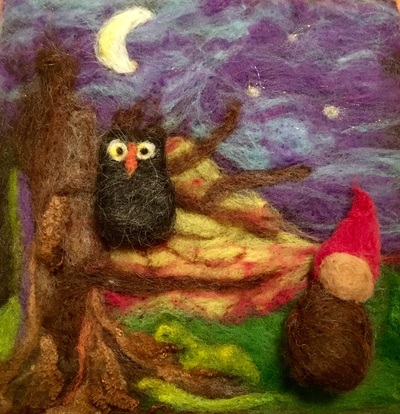


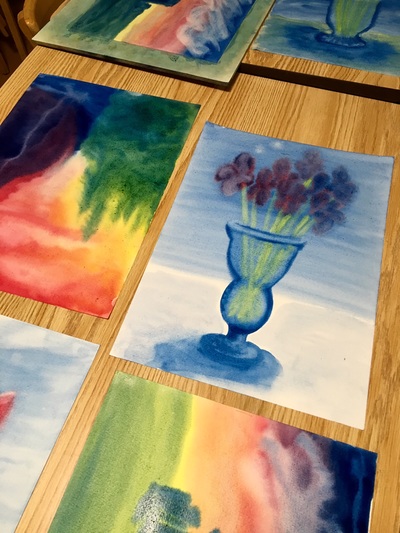
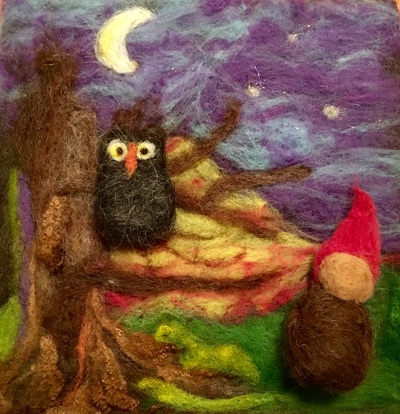

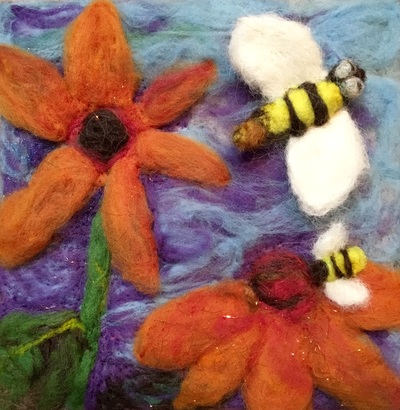

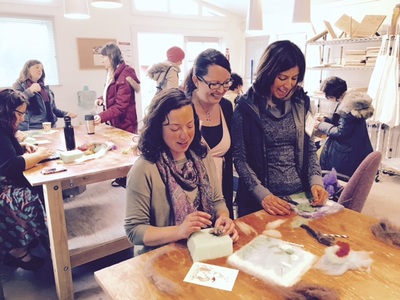

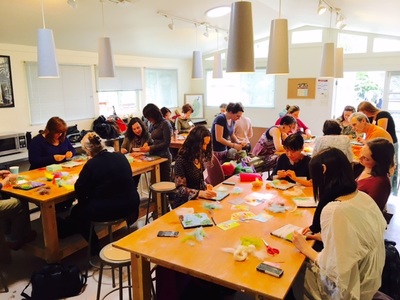
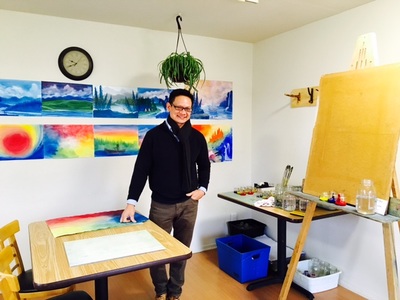



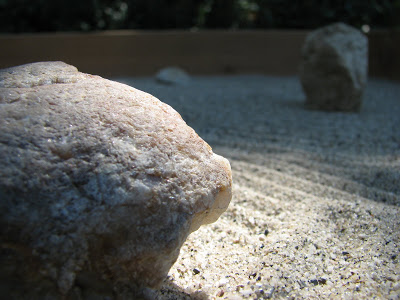

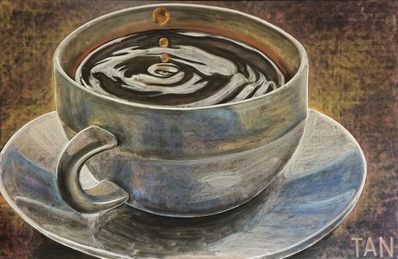


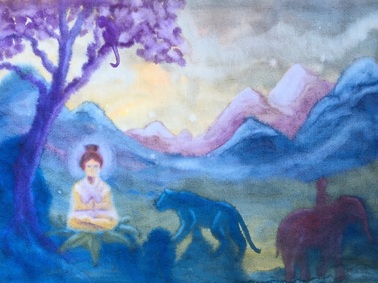
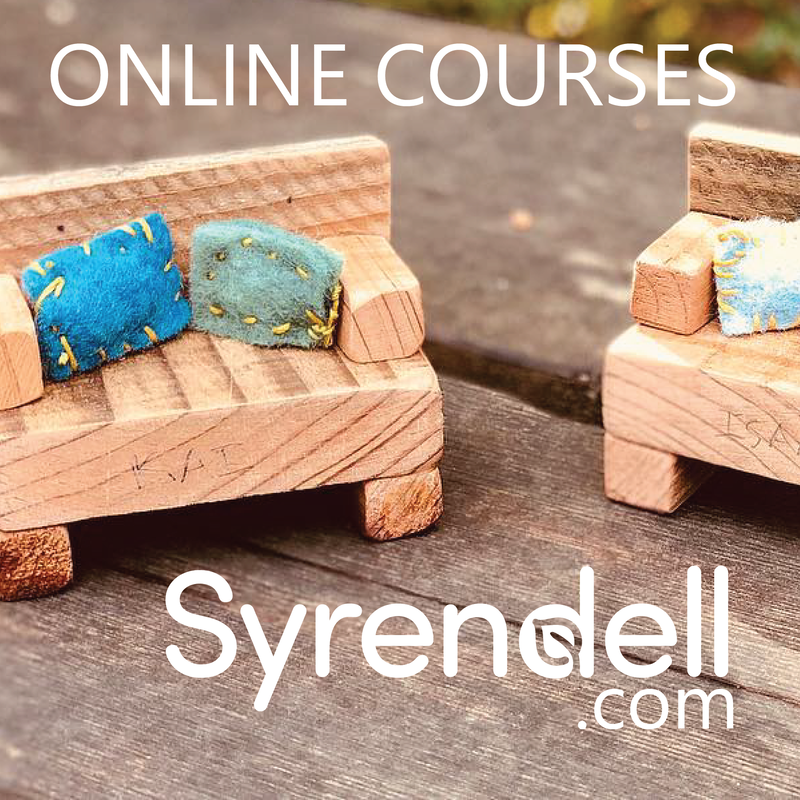
 RSS Feed
RSS Feed
